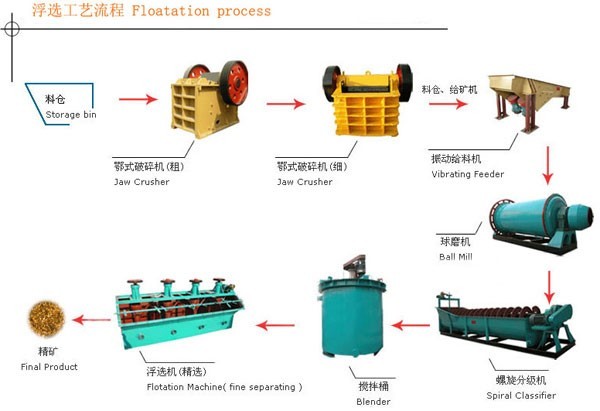
NEWS
Introduction to nickel smelting
Nickel ore is mainly divided into copper-nickel sulfide ore and nickel oxide ore. The beneficiation and smelting processes of the two are completely different: different beneficiation methods are selected according to the ore grade of copper-nickel sulfide ore, and then smelting is carried out; the smelting and enrichment methods of nickel oxide ore can be divided into two categories: pyrometallurgy and hydrometallurgy. The specific beneficiation and processing content will be introduced in detail below.
Copper-nickel sulfide
Stone selection method
The beneficiation method of copper-nickel sulfide ore is mainly flotation, while magnetic separation and gravity separation are usually auxiliary beneficiation methods. When flotating copper-nickel sulfide ore, collectors and frothers for flotation of copper sulfide minerals are often used. A basic principle for determining the flotation process is to allow copper to enter nickel concentrate and avoid nickel from entering copper concentrate as much as possible. Because the nickel in the copper concentrate is greatly lost during the smelting process, while the copper in the nickel concentrate can be recovered more completely. There are four basic processes for the flotation of copper-nickel ore.

1) Directly use preferential flotation or partial preferential flotation process: When the copper content in the ore is much higher than the nickel content, this process can be used to select copper into a separate concentrate. The advantage of this process is that copper concentrate with a lower nickel content can be directly obtained.
2) Mixed flotation process: It is used to select ores with a copper content lower than nickel, and the resulting copper-nickel mixed concentrate is directly smelted into high-grade nickel matte.
3) Mixed-preferred flotation process: Mixed flotation of copper and nickel from the ore, and then separation of low-nickel copper concentrate and copper-containing nickel concentrate from the mixed concentrate. After smelting the nickel concentrate, high-grade nickel matte is obtained, and the high-grade nickel matte is further flotated and separated.
4) Mixed-preferred flotation and partial nickel recovery from mixed flotation tailings: When the floatability of various nickel minerals in the ore is very different, after mixed flotation of copper and nickel, nickel-containing minerals with poor floatability are further recovered from their tailings.
Nickel sulfide ore smelting
The process selection depends on the type of raw materials, composition and product requirements. Most sulfide ores are smelted by matte making, that is, various nickel sulfide ores are smelted into low-nickel matte by different pyrometallurgical processes, and then the low-nickel matte is blown into high-nickel matte by a converter, that is, an alloy of nickel sulfide and copper sulfide. The high-nickel matte is then refined by different refining methods in nickel refineries to produce different nickel products.
Nickel production method
Electrolysis method: The enriched sulfide ore is roasted into oxide, reduced to crude nickel with carbon, and then electrolyzed to obtain pure metallic nickel.
Carbonylation method: The nickel sulfide ore is reacted with carbon monoxide to generate tetracarbonyl nickel, which is decomposed after heating to obtain high-purity metallic nickel.
Hydrogen reduction method: Nickel oxide is reduced with hydrogen to obtain metallic nickel.
Search
Categories List
Need More Details?
Contact me for details on creating and managing design projects, project features, and services and prices